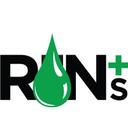Measuring Reaction and Separation

August 26, 2013
BY Jeff Fetkenhour
The quality of biodiesel is critical to reliable performance and acceptance in the market. ASTM International establishes standards by which biodiesel fuel quality is evaluated. These standards are defined by the ASTM Standard Specification D6751. Listed among the 21 specifications in D6751 is standard method D6584, Test Method for Determination of Total Monoglycerides, Total Diglycerides, Total Triglycerides, and Free and Total Glycerin in B-100 Biodiesel Methyl Esters by Gas Chromatography. This referee test method is used to evaluate the extent of reaction from feedstock (e.g., triglycerides) to biodiesel (i.e., methyl esters) as well as the separation of free glycerin from the finished product. Proper application of D6584 is even more important now that it serves in part to distinguish the new No. 1-B grade biodiesel classification by identifying and quantifying total monoglyceride content. For the biodiesel producer trying to optimize plant production and qualify inventory for valid RINs, correct measurement of free and total glycerin is vital.
The determination of glycerin and glycerides by D6584 requires effective gas chromatography (GC). Fundamentally, the sample is introduced through the instrument inlet, the analytical column separates the components (and analytes of interest), and calibration information is used to process the data for compound identification and quantification. There are many gas chromatography system options available and at work in analytical laboratories today—some with more bells and whistles than others, but all are expected to achieve the same analytical results and meet method repeatability and reproducibility requirements. Some may come equipped with an autosampler to ensure more consistent sample introduction for better retention time stability; others may have more user-friendly data processing software that enable chromatogram overlays for easier peak identification and interpretation. Regardless, all systems must be capable of consistently supporting sufficient chromatographic peak shape, peak resolution, calibration and retention time stability.
Analysts are expected to maintain a logbook to record instrument usage, calibration information and maintenance events. These log entries support troubleshooting of instrument performance issues. Additional daily diagnostics such as detector output and gas levels can be recorded to monitor instrument stability. Analytical columns have a limited lifespan. Some analysts will base column replacements on the number of injections made or a period of time (e.g., three months). While this type of proactive approach may be suitable, it may result in change-outs that occur prematurely, resulting in unnecessary laboratory expenses, or change-outs that occur too late, resulting in poor peak identification and quantification. Regular, day-to-day comparisons of chromatography generated during analysis of reference standards as well as characteristic sample patterns are useful for monitoring the decline in column performance. Evidence of decline can be indicated by gradual retention time shifts to earlier elution times or excessive peak shape tailing of the internal standard 1,2,4-Butanetriol. Regular analysis of reference standards enables the analyst to proactively identify instrument performance concerns before they impact the integrity of the test results.
Accurate interpretation of chromatography for application of D6584 relies on both the evaluation of standard reference materials analyzed for quality control, such as calibration and marker standards, and the software features provided by the instrument vendor, such as overlay and integration functions. Initial calibration steps establish the method for compound identification and quantification. Continuing calibration verification (CCV) analyses acquired routinely with sample analyses are implemented to verify retention times and calibrations are correct. Commercially available monoglyceride reference materials are particularly helpful for the assessment of total monoglcyerides. These reference materials establish a direct retention time marker for monopalmitin, monoolein and monostearin. Ideally, computer software features for the GC system permit the option to overlay various chromatograms (e.g., CCV, Mono-marker, and characteristic samples) to look for retention time alignment. When the Mono-marker is included in an overlay of chromatograms, the retention time for three of the five monoglycerides summed for total monoglycerides can be definitively established. Use of control charts to trend retention times, relative retention time indices and percent recovery can also be used to establish confidence in the instrument control status for defensible results.
Advertisement
Overall, the correct application of D6584 serves to ensure quality production processes, validate the grade of biodiesel blendstock and promote confidence for OEMs and obligated parties.
Author: Jeff Fetkenhour
Owner, Gorge Analytical LLC
541-386-0249
gorgeanalytical@embarqmail.com
Advertisement
Related Stories
Clean Fuels Alliance America on June 10 announced the launch of the newly redesigned BQ-9000 website, delivering a streamlined and user-friendly experience that better showcases the value of biodiesel quality assurance.
The U.S. EPA on Aug. 21 released data indicating nearly 2.04 billion RINs were generated under the RFS in August, up from 1.84 billion generated in August 2022. Total RIN generation for the first eight months of the year reached nearly 15.45 billion.
WestJet Group CEO Alexis von Hoensbroech, on Sept. 19 at the World Petroleum Congress in Calgary, addressed the airline's ambitions to achieve net-zero emissions by 2050 and the vital role SAF plays in the future of decarbonizing aviation.
Clean Fuels Alliance America, American Soybean Association, National Oilseed Processors Association the U.S. Canola Association are urging the Biden administration to adopt GREET for the purposes measuring GHG reductions for the SAF tax credit.
Montana Renewables LLC, a subsidiary of Calumet Specialty Products Partners LP, on Sept. 18 hosted an event to celebrate the first receipts of camelina oil into its biorefinery in Great Falls, Montana. The facility produces renewable diesel and SAF.
Upcoming Events










